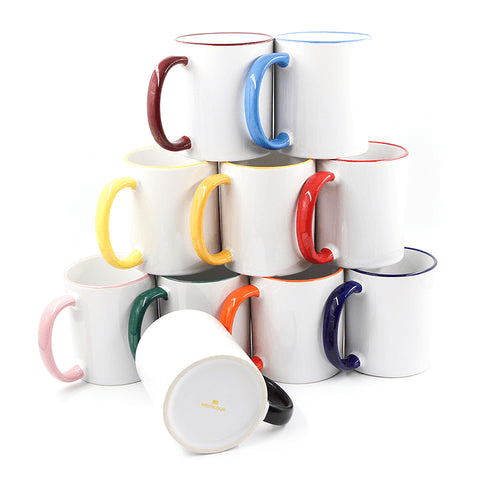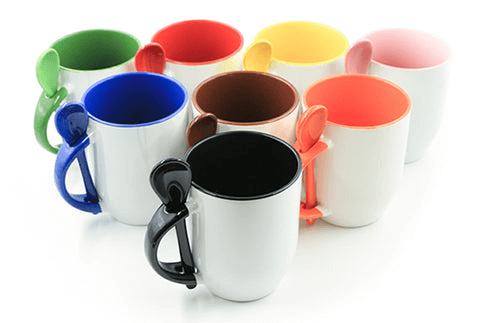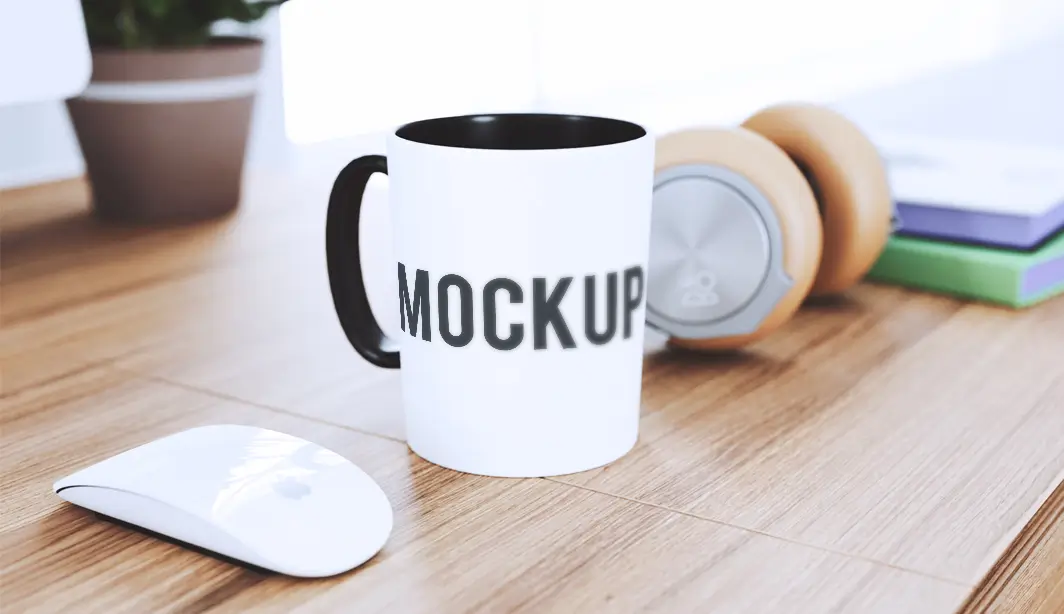As one of the most popular of all sublimation blank items, mugs are available in a variety of styles and rim, handle, and/or interior colors. But the most common of them all is the omnipresent 11 ounce white “C” handle coffee mug. These are available from a wide range of manufacturers, distributors, and resellers, in almost as wide of a variety of quality levels. All of these mugs are not created equal, and if you find some bargain mugs and have problems with image quality, soft coatings, or shape irregularities, any cost savings go out the window.
So just how do you go about the task of choosing mugs to sublimate? Here are 5 basic tips that will ensure you pick the right mugs.
Buy from a reputable supplier. First and foremost, you want to buy your mugs from someone who has a reputation for selling quality products at a good price, with great customer service in case you do have questions or a problem.
Mugs should be perfectly round with straight and smooth sides. All mugs have a slight taper or curve to the top rim and bottom edge. This is to assist removing the mugs from the mold when they are made. That curve should be very minimal though, with the area between the top and bottom of the mug as smooth and straight as possible, and perfectly round. That lets your press provide even pressure and heat to produce the best image quality, with full top-to-bottom printing around the entire mug being easily achievable. Lower quality mugs can have uneven sides, larger curves and tapers on either the top or bottom, and can even be out of round. All these things can make it challenging to get a good print, and nearly impossible to print full top-to-bottom.
Mugs should always have a hard coating. All coatings are not made equal either, and there’s a big difference in how a hard and soft coating sublimates. Soft coatings typically require lower temperatures to sublimate, or you’ll wind up softening the coating up so much the paper will stick to the mug to where you may never get it off. Hard coatings, on the other hand, don’t get soft until a much higher temperature, so your paper isn’t likely to stick at all. Another huge plus is that hard coatings are dishwasher safe, and the images you put onto these mugs will last for years – much longer than any softer coated mugs.
Mugs should always have a smooth, even coating. Inferior coatings may have visible blemishes, or even thin areas in the coating. You may even see spots where there is no coating, and no coating equals no sublimation. You want to see a smooth, glossy finish with no imperfections.
Mugs should sublimate with full, rich color. Even if you follow all of the above tips, there is no substitute for sublimating a mug and seeing what it looks like. Assuming all of your settings are correct and there are no issues with your sublimation system, you should see rich vibrant color similar to the image on your monitor. If not, you might have mugs with a lower quality coating.
The bottom line is that if you are using the correct settings, proper sublimation ink, quality sublimation paper, and a well made mug press, then you should expect no less than great results when you sublimate your mugs. If you have light areas of thin color, can’t print all the way to the edge, have poor and dull colors, or any other quality issue, then it might be time to look for a new mug. After all, the price difference between a soft coated economy mug and a high quality hard coated mug usually isn’t more than a few cents anyway, and that can easily be recouped by eliminating wasted mugs and time, along with gaining a reputation for selling quality products.



